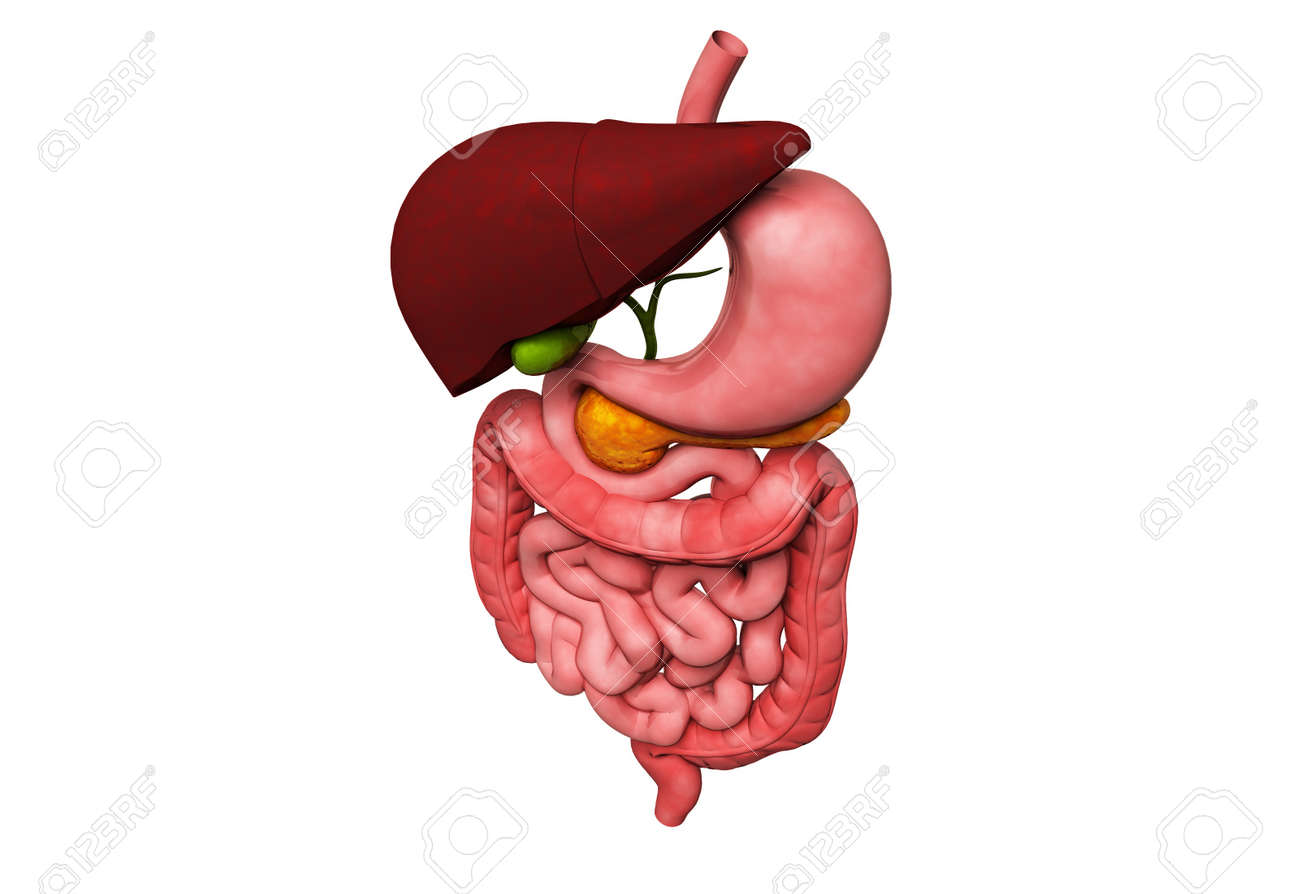Digestive system is a group of organs which work to convert the food in basic nutrients for feeding energy to whole body. Human do not produce its own food like plants and depend on other plants and animals for food, hence called Hetrotrope. Human need various nutrients, proteins and vitamins which are derived from food through digestion. Chewing, in which food is mixed with saliva begins the process of digestion. This produces a bolus which can be swallowed down the oesophagus and into the stomach. The complete process of nutrition is divided into five stages:

- Ingestion
- Digestion
- Absorption
- Assimilation
- Defecation
Ingestion:
The process of taking food, drink or any other substance into the body by swallowing and absorbing it, is known as Ingestion.
Digestion:
- Digestive system contains six components which are as follow-
- Mouth
- Esophagus
- Stomach
- The small intestine
- Colon (large intestine)
- Rectum
- Digestion is a process through the large insoluble and non absorbable food particles are broken down into smaller water soluble and absorbable particle which are finally absorbed by blood plasma.
- It is a form of catabolism which is divided into two groups based on how food is broken down in body, if food is broken down through mechanical means than it is known as Mechanical Digestion and if it is through chemical means than it is called as Chemical Digestion.
Mouth and Oesphagus
- Digestion initiates right from mouth, where Salivary gland secrets the Saliva in mouth in which two types of enzymes are found, ptyalin and maltase.
- saliva contains an enzyme called salivary amylase that begins the process of converting starches in the food into maltose
- Around 1.5 litre of saliva is secreted in human on an average day, it is acidic in nature (pH 6.8)
- Through food pipe or Oesophagus food reach into the stomach.
Digestion in Stomach:
- Ph of stomach is 1.5-2.5. This acidic environment helps in breaking the food particle and absorption of necessary nutrients from food.
- Highly acidic environment of stomach contains gastric glands which secretes gastric juice, this is a light yellow acidic acid.
- Pepsin and Renin are the enzymes in the gastric juice.
- Parietal cells secretes Chlorine and Hydrogen ion which combine to form Hydrochloric acid which helps in killing micro organisms and with the help of enzyme pepsin helps in hydrolysis of proteins.
- Hydrochloric acid makes the food acidic by which ptyalin reaction of the saliva end.
- Pepsin breaks down the protein into peptones and Renin breaks down the Caseinogen into Casein.
Digestion in Duodenum:
- The duodenum is the first and shortest segment of the small intestine. It receives partially digested food (known as chyme) from the stomach and plays a vital role in the chemical digestion of chyme in preparation for absorption in the small intestine.
- The gall bladder releases bile, which has been produced by the liver, to help further break fats down into a form that can be absorbed by the intestines.
- As the food reaches the duodenum bile juice form the liver combines with it. Main function of the bile juice is to convert the acidic food into alkaline, as it is alkaline in nature.
- Pancreatic juice form pancreas combines with food and it contains the following enzymes:
- Trypsin: It converts the protein and peptone into polypeptides and amino acid.
- Amylase: It converts the starch into soluble sugar.
- Lipase: It converts the emulsified fats into glycerol and fatty acids.
Digestion in Small Intestine:
- Here the process of digestion completed and absorption of digested foods start.
- In small intestine, intestinal juices secrete and it is alkaline in nature and around 2 liters of intestinal juice secretes per day.
- Intestinal juice contains the following enzymes:
- Erepsin: It converts the remaining protein and peptone into amino acids.
- Maltase: It converts the maltose into glucose.
- Sucrase: It converts the sucrose into glucose and fructose.
- Lactase: It converts the lactose into glucose and galactose.
- Lipase: It converts the emulsified fats into glycerol ad fatty acids.
Absorption:
- Digested food is absorbed by blood plasma is known as Absorption.
- The absorption of digested foods takes place through small intestine villi which are finger like structure extended into the lumen of small intestine.
Assimilation:
- Use of absorbed food in the body or movement of digested particles where they are used is called assimilation
Defecation:
- It is final act of digestion. It is also known as bowl movement. Undigested food reaches from small to large intestine where bacterias converts it into faeceswhich is excreted through anus.








0 comments:
Post a Comment